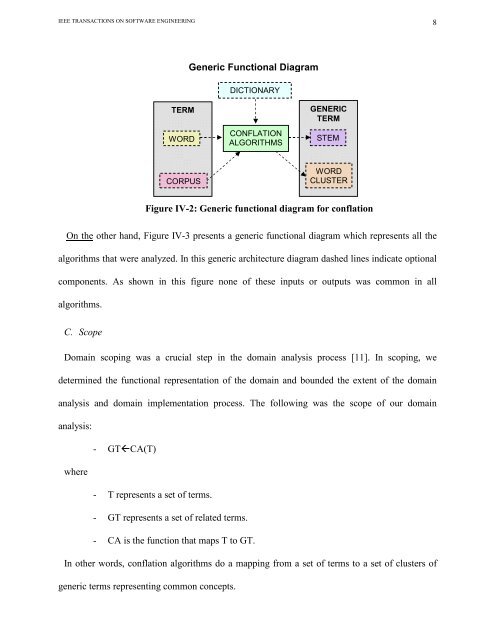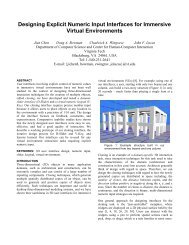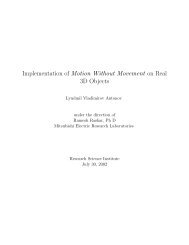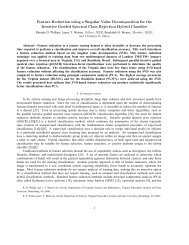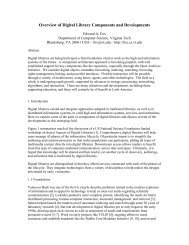A Case Study of Using Domain - Computer Science Technical ...
A Case Study of Using Domain - Computer Science Technical ...
A Case Study of Using Domain - Computer Science Technical ...
You also want an ePaper? Increase the reach of your titles
YUMPU automatically turns print PDFs into web optimized ePapers that Google loves.
IEEE TRANSACTIONS ON SOFTWARE ENGINEERING<br />
On the other hand, Figure IV-3 presents a generic functional diagram which represents all the<br />
algorithms that were analyzed. In this generic architecture diagram dashed lines indicate optional<br />
components. As shown in this figure none <strong>of</strong> these inputs or outputs was common in all<br />
algorithms.<br />
C. Scope<br />
<strong>Domain</strong> scoping was a crucial step in the domain analysis process [11]. In scoping, we<br />
determined the functional representation <strong>of</strong> the domain and bounded the extent <strong>of</strong> the domain<br />
analysis and domain implementation process. The following was the scope <strong>of</strong> our domain<br />
analysis:<br />
where<br />
- GT�CA(T)<br />
TERM<br />
WORD<br />
CORPUS<br />
- T represents a set <strong>of</strong> terms.<br />
- GT represents a set <strong>of</strong> related terms.<br />
- CA is the function that maps T to GT.<br />
In other words, conflation algorithms do a mapping from a set <strong>of</strong> terms to a set <strong>of</strong> clusters <strong>of</strong><br />
generic terms representing common concepts.<br />
Generic Functional Diagram<br />
DICTIONARY<br />
CONFLATION<br />
ALGORITHMS<br />
GENERIC<br />
TERM<br />
STEM<br />
WORD<br />
CLUSTER<br />
Figure IV-2: Generic functional diagram for conflation<br />
algorithms<br />
8


